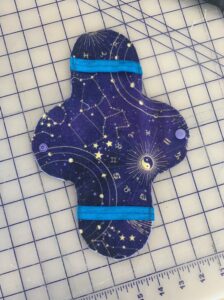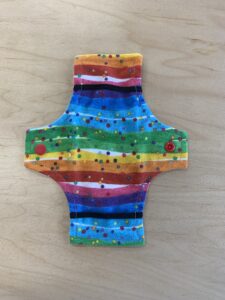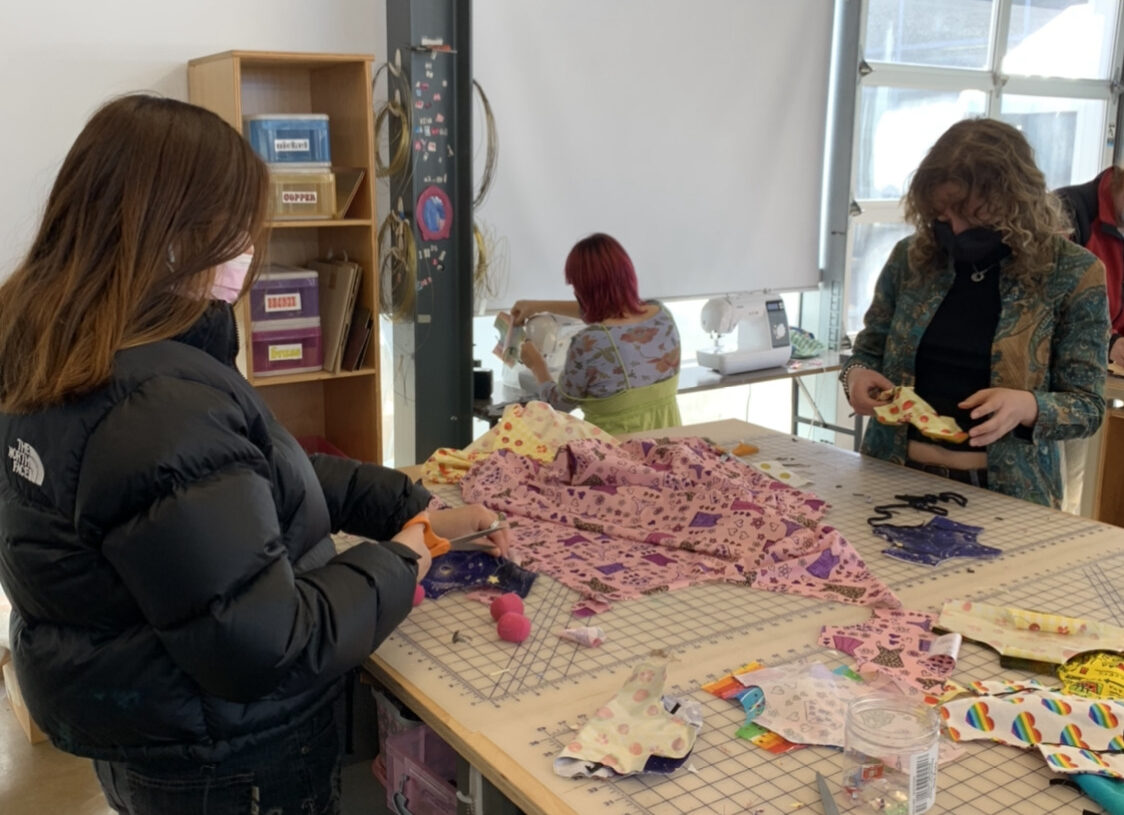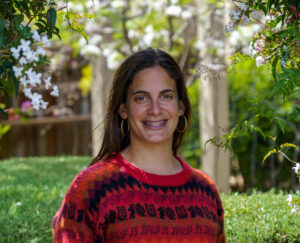Jewelry textiles teacher at Lick-Wilmerding High School Laurel Nathanson has incorporated civic engagement into the curriculum of her Sewing and Textile Arts Level 2 class.
During the past couple of months, the sewing class has been working with two organizations that provide reusable maxi pads to underprivileged communities in third world countries which don’t have access to menstrual products. Currently, neither the sewing nor jewelry class are PPP classes, however, next year sewing 2 will be designated as a public purpose.
Nathanson had been searching for new public purpose projects for the sewing class. The idea came from one of her earlier projects at LWHS when a sewing class made capes for children in wheelchairs.
“The impetus for me was wanting the members of the class to make something for someone else. I felt like my curriculum wasn’t addressing a key component of what our intentions are here at Lick. The kids now have a concrete skill that can be of value in the world,” Nathanson said.
Erika Tam ’22 has taken sewing 1 and 2 and feels that this project is unique to any of the projects she’s undertaken. “Past sewing projects have been sewing for the student’s own benefit. I think being able to do something that benefits the community outside of school is really cool and it also aligns with the school’s mission.”
The sewing class is working with The God’s Child Project and Too Little Children, which both share the main goal of preventing menstruating middle school students from missing school. Students can be on their periods and perhaps out of school for up to a week. In places where feminine hygiene products are hard to obtain or expensive, a girl’s menstrual period might mean their frequent absences put them behind her classmates, take a toll on their test results and impact if they go to high school and their future.
The God’s Child Project’s operational bases are in Guatemala. Too Little Children is centered in Kenya. Too Little Children started the pad project when a school teacher requested them to supply pads instead of pencils and school supplies for his students.
Nathanson and her students launched the LWHS reusable maxi pad project to meet the needs of menstruating students who could not access pads or tampons. The sewing class’ first step in designing their project was to devote a class period to a discussion about period poverty around the world. Each student did their own research, then students gathered and shared what they had learned.
Members of the class took turns, popcorning facts and sharing statistics.
Things like: Federal prisons in the U.S. only began to provide free menstrual products to inmates in 2018. One of 10 menstruating people in the world and some in the United States, miss school due to their period. Period products are bizarrely expensive and difficult to afford for many. Period products are subject to sales tax (as are infant and adult diapers) which makes them even more expensive. “It was interesting to me that even in the United States, a fully developed country, there is limited accessibility to menstrual products,” Tam said.
Students found that according to Global Citizen, 2.3 billion menstruating people globally live without basic sanitation facilities and services. Menstruating people with special needs and disabilities disproportionately lack access to menstrual resources.
According to the Children’s Hospital of Philadelphia, in some developing parts of the world menstruating people continue to resort to paper, leaves and wool pieces rather than pads or tampons.
Students discussed that in many parts of the world, a menstruating person is taboo; they are considered impure and forbidden to attend social and religious events. The stigma of menstruation can impact menstruating people’s social welfare and rights.
After the fact-finding meeting, the sewing students began the process of designing and manufacturing the pads. The class split into two groups. Each group created a different maxi pad design. Then, they each designed an assembly line to manufacture the pads. In each group, the facets of production were much the same. The elements of the pad include the pull, the absorbent material and the flannel. In each group, some students were designated to cut the fabric and others to assemble.
One group sewed a pull in between two layers of flannel and did a zig-zag stitch around the rim to close off the raw edges. This design had rounded edges and was sent to The God’s Child Project.

photo by Amelia Rakhlin D’Almeida
The other group sewed the flannel and pull together inside-out or the “right/pretty” sides together, to then turn it and have the edges enclosed. This design was squared on the edges and was sent to Too Little Children.

photo by Amelia Rakhlin D’Almeida
Both of the pads had flaps with snaps on them that will clip around the underwear to keep the pad attached. An absorbent material was held in place by elastic not actually attached to the maxi pad. The absorbent layer faces the body, and the flannel faces down towards the underwear.In the end, the class made 21 rounded maxi pads and 20 squared maxi pads. The class focused on precision, as the organizations would reject poorly crafted maxi pads.
Continuing the theme of benefiting others, the recent sewing project shifted its focus to environmental protection. After recently learning about the effects of the denim industry on the environment, sewing’s next project was upcycling their old jeans to create a bag of their choice for personal use.






